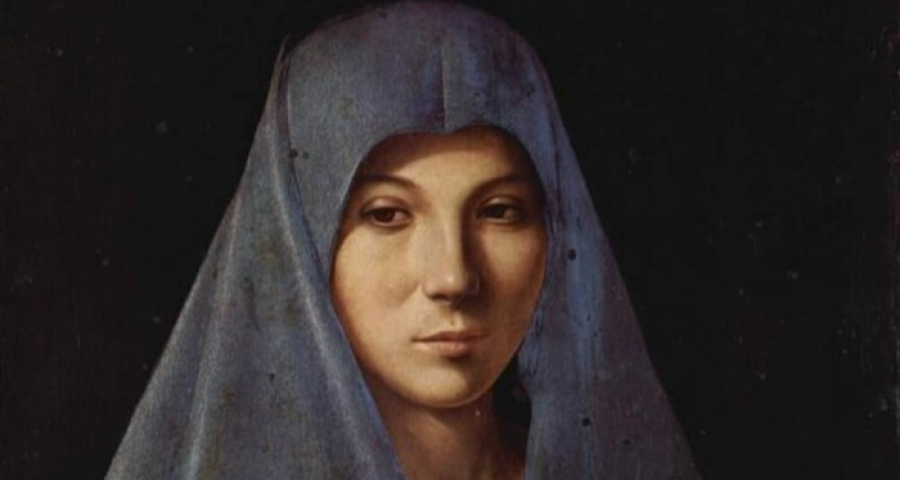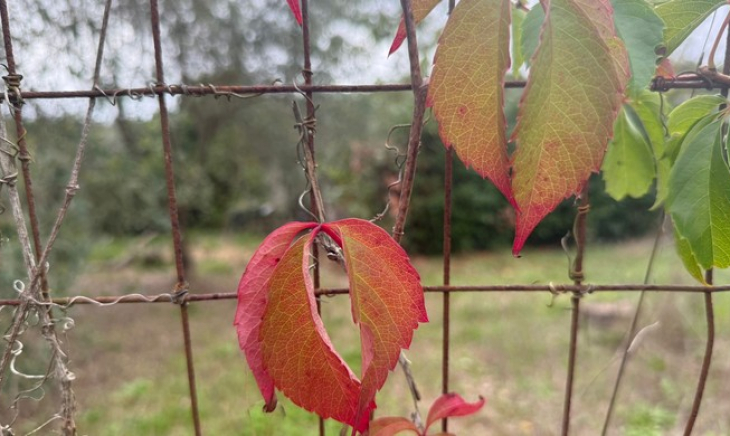Narrative economy/7 - From the friendship of Jesus with the children of men to the children of Gagliano, a spiritual spectacle that revives the world
by Luigino Bruni
published in Avvenire on 24/11/2024
“I lived in Boscaccio, in the Bassa, with my father, my mother and my eleven siblings. Every morning my mother would give me a basket of bread, a bag of apples or sweet chestnuts, my father would line us up in the farmyard and make us say the Pater Noster aloud: then we would go with God and return at sunset. Our fields never ended and we could have run even a whole day without trespassing. ”
Giovannino Guareschi, Mondo piccolo
Levi's encounter with children reveals to us a soul of the writer, and an essential dimension of every civilisation: the friendship between adults and children.
Children are the greatest heritage of humanity. Not just because they are the first source of joy for women and families, or because they are the sign that God has not forgotten us, nor just because they are the only chance of a good future for us. Children are the heritage of the universe by their mere being in the world. In every child that is born the covenant of Elohim is renewed, Noah's rainbow shines again on the earth that is no longer the same after the birth of every little girl and boy, who can be the messiah, the goel, the redeemer from pain and injustice. The first sign, and the decisive one, that a civilisation has begun its decline is the absence of children from our cities. The birth rate is worth a thousand times more than the GDP, because we can also reduce the GDP (perhaps by zeroing the production of weapons and gambling) and live well or better, but when children disappear from our homes, we can only weep or pray. Along the sorrowful way, for the women of Jerusalem Jesus expressed his prophecy of doom in these dreadful words: ‘Blessed are the barren, the wombs that have not begotten and the breasts that have not suckled’ (Luke 23:29). A beatitude in reverse - the resurrection is also the fulfilment of the prophecy of the child: the Emmanuel of Isaiah.
Children are co-protagonists in Cristo si è fermato a Eboli. We find them alongside the mythical figures of the ‘monachicchi’, who often appear in the magical world described by Carlo Levi. The ‘monachicchi’ were the spirits of Lucania, the souls of children who died without being baptised, who continued to dwell among the people. Mischievous beings, nice and not bad. They do no harm, they are just mischievous, and innocent. They are great friends of children, with whom they spend many hours chasing and catching each other: ‘Monachicchi are very small, cheerful, aerial beings: they run fast here and there, and their greatest pleasure is to do Christians all sorts of mischief. They tickle sleeping men under their feet, they pull the sheets off their beds, they throw sand in their eyes, they knock over glasses full of wine, ... they curdle milk, they pinch, they pull hair, they sting and whistle like mosquitoes' (p. 136). Monachicchi always run, like all children.
The perennial running of children is the common note in all countries of the world. If they have to move from home to the shop, they don't walk: they run. Then in countries where there are many, many children, the perpetual running of the children fills the landscape, becomes the environment within which the events of the adults take place. When I first came to Africa, what struck me most was not the poverty but the rivers of children running fast and together along the roads, many to go to school - one of the beautiful faces of poverty is the children's hurry to get to school early. A beautiful icon of the desire for life and the future that still exists in those countries, and which we Europeans have lost - when Corneille, a Congolese friend of mine, came to visit me, after some time wandering around the city he said sadly: ‘but where are the children? As long as children run wild and free in the streets, as long as at least one runs, one can still hope, because that running fuels big dreams. The number of children is always an indicator of decisive things. They measure poverty and misery, yesterday and unfortunately still today; but they indicate many other good things. The real sign that will tell if and when a civilised spring will begin in Europe will be clouds of children running again in the company of ... monachicchi.
The children of Gagliano are also regular visitors to Carlo's house: ‘If I didn't have the company of gentlemen, I had that of children. There were many of them, of all ages, and they used to knock at my door at all hours of the day. What attracted them at first was Baron [his dog], this childish and wonderful being. Then my painting had struck them, and they never ceased to be amazed by the images that appeared, as if by magic, on the canvas, and which were the houses, the hills and the faces of the peasants'. Levi refers to these children with a beautiful word: friends: ‘They had become my friends: they freely came into the house, posed for my paintings, proud to see themselves painted... There were always about twenty of them, and they all considered it their utmost honour to bring me the box, the easel, the canvas: for this honour they disputed and beat each other’ (p. 192). They had thus become his friends...
One of the most beautiful spiritual spectacles on earth is the friendship between adults and children. Today we have become accustomed to talking almost exclusively about the dangers, risks and abuses in relationships between adults and children, and sadly we must. But we should never forget that the world lives and is reborn every day thanks to the friendship between schoolteachers and their boys and girls, between parents and their sons and daughters, between coaches and their pupils, between educators and those who attend oratories, parishes, school camps, bus trips ... Life, civilisation and faith are transmitted within these asymmetrical yet wonderful and necessary relationships. Although Aristotle and many philosophers denied that there could be friendship between adults and children - because of too much asymmetry -, I am instead convinced that there is often something very close to what we call friendship between them, because there can be true reciprocity, the true essential ingredient of all friendship. The first teacher of this very special and delicate friendship was Jesus, who also gave us his friendship with children. There are too many wonderful words about children in the gospels not to think that Jesus was really a friend of children (because he frequented the homes where he had learned to know and love women and children), he lived a mysterious reciprocity with them. Otherwise he could not have said: ‘Truly I say to you, unless you are converted and become like children, you will not enter the kingdom of heaven at all’. (Matthew 18:3). And then he added: ‘Beware of despising any of these little ones, for I tell you that their angels in heaven continually see the face of my Father’ (18:10). Their angels in heaven ..., that is, the cousins of the little ones.
In the gospel there is a theology and pedagogy of childhood that is still waiting to be taken seriously. On children, Jesus' message is really strong and revolutionary: children are teachers in the faith, they are the ones to look to for conversion as adults. And perhaps there is nothing on earth more beautiful than a child with faith. After almost two thousand years since this evangelical pedagogy, on the civil level societies have made great progress in recognising and respecting children, but it is on the economic and commercial level where we are protecting them little, and less and less, where we are losing some of the conquests of the past century. We are leaving them more and more exposed, alone, to the empire of advertising, to the serial merchants of profit, to the techniques of marketing, now increasingly penetrating through smartphones that have become their natural environment - I am convinced that we should call soon, and very strongly, for a moratorium on the use of children in advertising.
In Christ, there is a particularly touching episode with one of them: ‘A boy of eight or ten years old, Giovanni Fanelli... was most enthusiastic about painting... He was very attentive to everything I did: he would see me preparing the canvas with primer, pulling it on the frames: these operations, because I did them, seemed to him as essential to art as the act of painting’. He then describes him to us: ‘He was a shy child, he blushed easily, he would not use, however much he wanted to, to show me his works. Warned by others, I saw them. They were not the usual childish paintings, nor were they imitations. They were shapeless things, blobs of colour not devoid of enchantment'. So he concludes: ‘I do not know whether Giovanni Fanelli became or could become a painter: but I certainly never saw in anyone that faith in a revelation that had to come from work alone; that belief in the repetition of technique as an infallible magic formula, or as the work of the earth, which, ploughed and sown, bears its fruit’ (pp. 192-193). It does not seem - at least according to my initial improvised research - that Giovanni Fanelli became a painter; but whatever work he did when he grew up, that experience at Carlo's house changed him forever. A true artistic experience, especially at the age of eight or ten, imprints a mould on the soul, changes the perception of the world, gives another point of view on life. It adds a fourth dimension to the gaze, it increases the space for imagination and creativity - a less pan-mercantile society than ours, alongside or instead of the ‘school-to-work’ alternation (PCTO), would have invented the ‘school-to-art’ alternation, perhaps more essential for growing up.
Finally, Levi gives us more words about his friendship with those peasant children: ‘These boys, ... were lively, intelligent and sad. Almost all of them were dressed in badly patched rags, in the old jackets of their older brothers, with their too-long sleeves rolled up over their wrists: barefoot or with big, pierced men's shoes... All of them were alive with an early life, which would then fade away with the years in the monotonous prison of time. Mobile and silent, I could see them appearing around me from all sides, full of mutual fidelity and unspoken desires... They were my friends, but full of modesty, shyness and diffidence, naturally accustomed to silence and to hiding their thoughts; immersed in that fleeting, mysterious animal world in which they lived, like small, quick and fleeting goats' (pp. 193-194).
They were his friends, quick and fleeting, but ... with certain notes typical of children who are friends of adults, yesterday and perhaps still today: modesty, shyness, silence, sadness, even distrust. I seem to see those beautiful encounters in Gagliano again now, perhaps because they were also mine as a child. In my village I was loved and formed by my family, my school, my parish; but no less so by some ‘grown-up’ friends, who joyfully allowed themselves to steal the ‘craft of living’.













